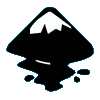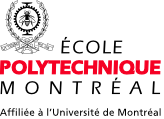Libre Graphics Meeting 2007 Montréal, Québec, Canada 4-6 May – École Polytechnique de Montréal
The Conference
Projects
Blender

In a few short years, Blender has gone from being a closed source commercial application to one of the most talked about 3d modellers around. The Blender Foundation orchestrated a buy-back of the copyright to the Blender source code, a first in free software. Now, the Blender team are embarking on another new adventure - creating an animated short with Blender, and funding the entire project with community donations and sponsorship.
In July 2002, Ton Roosendaal, one of the founders of the company NaN, creators of the 3D modeller Blender, pulled off something of a coup.
With the company in trouble, he created the Blender Foundation, and persuaded NaN's investors to sell the copyright to Blender, so that he could then give it away under the GNU GPL. The "Free Blender" campaign sought to raise 100,000 EUR so that the Foundation could buy the rights to the Blender source code and other rights.
With an enthusiastic group of volunteers, among them several ex-NaN employees, a fund raising campaign was launched to "Free Blender." To everyone's shock and surprise the campaign reached the 100,000 EUR goal in only seven short weeks. On Sunday Oct 13, 2002, Blender was released to the world under the terms of the GNU General Public License. Blender development continues to this day driven by a team of far flung dedicated volunteers from around the world led by Blender's original creator, Ton Roosendaal.
This year, Ton is again doing something never seen before. Project Orange is a partnership between Montevideo and the Blender Foundation to produce a short film, entirely created with Blender and other free software tools. The primary source of funding for the project is once again an enthusiastic community. DVDs containing the Project Orange short, including a documentary on the making of the film and the .blender source files for all of the films content, are now being sold on the blender.org website.
GIMP

GIMP is the GNU Image Manipulation Program. It is available for a wide range of platforms, including GNU/Linux, Windows and MacOS X. It is the most widely used free software graphics package, with millions of users worldwide.
When Berkeley students Peter Mattis and Spencer Kimball started writing a bitmap editor in 1995, they never thought that their work would result in the most popular free software graphics editor. The project has grown beyond its original bounds, and off-shoots from GIMP are at the heart of the GNOME desktop environment and the MacOS X print drivers.
GIMP is the GNU Image Manipulation Program. It is available for a wide range of platforms, including GNU/Linux, Windows and MacOS X. It has millions of users worldwide.
It is an extremely powerful and full-featured photo retouching package, with support for layers, channels and masks, a variety of paint and selection tools, and load/save capacity for a stunning range of file formats. It is extensible via an advanced plug-in architecture, and interracts with a large range of external devices, including tablets, digital cameras, scanners and printers.
Inkscape

Inkscape is the leading free software vector graphics package. It has a vibrant developer and user community. It's available for GNU/Linux, Windows, MacOS X and all flavours of Unix.
Inkscape is a vector drawing program with capabilities similar to Illustrator, Freehand, and CorelDraw. It uses the W3C standard SVG as its native document format.
The Inkscape project has a stormy past, coming as it does from a fork with another project, Sodipodi. The advances made in Inkscape in a relatively short period have set it apart from its predecessor, and Inkscape is now the premier free software vector art program, with support for features like flowed text, styles and tileable cloning.
Perhaps the most impressive feature of Inkscape is the way that the project has gathered a large group of passionnate users and developers, working together to make a high quality drawing program for artists, illustrators, designers and hobbyists. Inkscape is vector drawing for real people.
Krita

Krita Winner of the 2006 KDE Akademy Award for Best Application. Krita is a painting and image editing application for KOffice. Krita is part of KOffice since version 1.4. Krita contains both ease-of-use and fun features like guided painting (never before has it been so easy to airbrush a straight line!) and high-end features like support for 16 bit images, CMYK, L*a*b and even OpenEXR HDR images.
Development on Krita was started in 1999. However, due to frequent changes of maintainer and long pauses between bursts of development wasn't ready for use until 2005. Now Krita is a reasonably capable image editor and a great platform for future development.
Krita supports many managed colorspaces, like rgb, grayscale, cmyk, lab, ycbcr and lms, in 8 and 16 bits per channel. Some colorspaces even support 32 bits per channel! With the development of KOffice 2.0, all these colorspaces will be available to all KOffice applications that need color management. An experimental watercolor colorspace that tries to follows the physics of paint is included in 1.5.
Open Clip Art Library

This project aims to create an archive of clip art that can be used for free for any use. There are over 12,000 clips from more than 700 artists available for download. The Open Clip Art Library uses open standard SVG files for vector format files and places all content into the public domain.
The Open Clip Art Library is transitioning to the Creative Commons sponsored Open Source project, ccHost , to host content and implement ideas of the community over the last couple of years.
Of specific importance at this conference is to meet with developers, coordinate with other projects, and get some time with the community for hacking.
Scribus

Scribus brings award-winning professional page layout to GNU/Linux and *nix desktops with a combination of "press-ready" output and new approaches to page layout. Scribus runs natively on Linux/*nix, MacOSX, OS/2 and Windows 2000/XP.
Since its humble beginning in the spring of 2001, Scribus has rapidly developed into one of the premier free software desktop applications. Called by Newsforge, "..one of the killer applications for Linux", Scribus brings new power and versatile tools for page layout. New features like separation previews, cross-platform python scripting, advanced PDF 1.4 support are just some of the hundreds of improvements large and small in Scribus. Scribus is under continued active development with more features and enhancements for the future.
Underneath the modern and user friendly interface, Scribus supports professional publishing features, such as CMYK color, spot colors, separations, ICC color management and versatile PDF creation. Scribus was the first page layout application on the planet to directly support PDF/X-3 output, a rigorous ISO standard. Scribus did so by almost a year. Other features include PDF Import, EPS import/export, Unicode text including right to left scripts such as Arabic and Hebrew.
